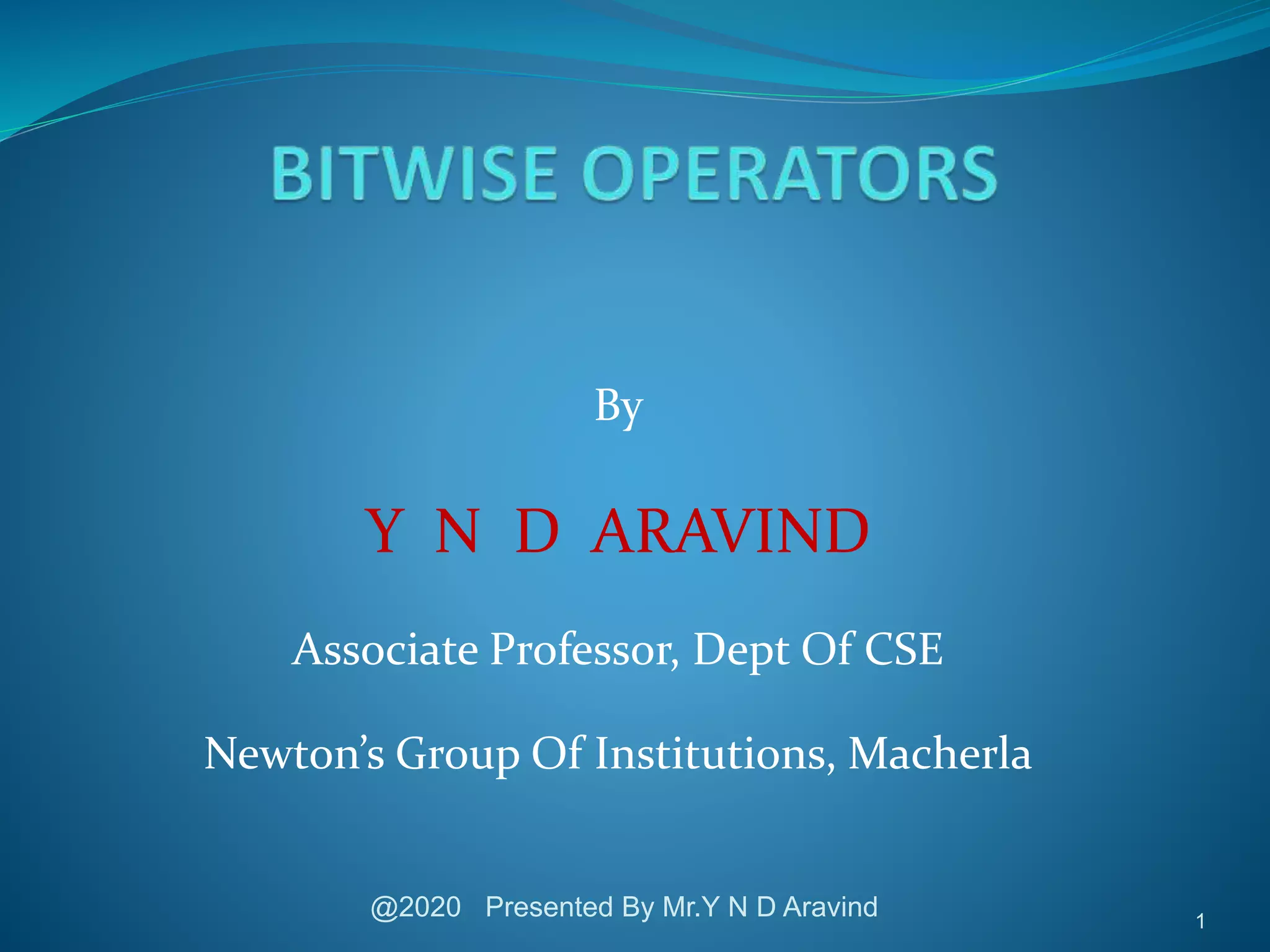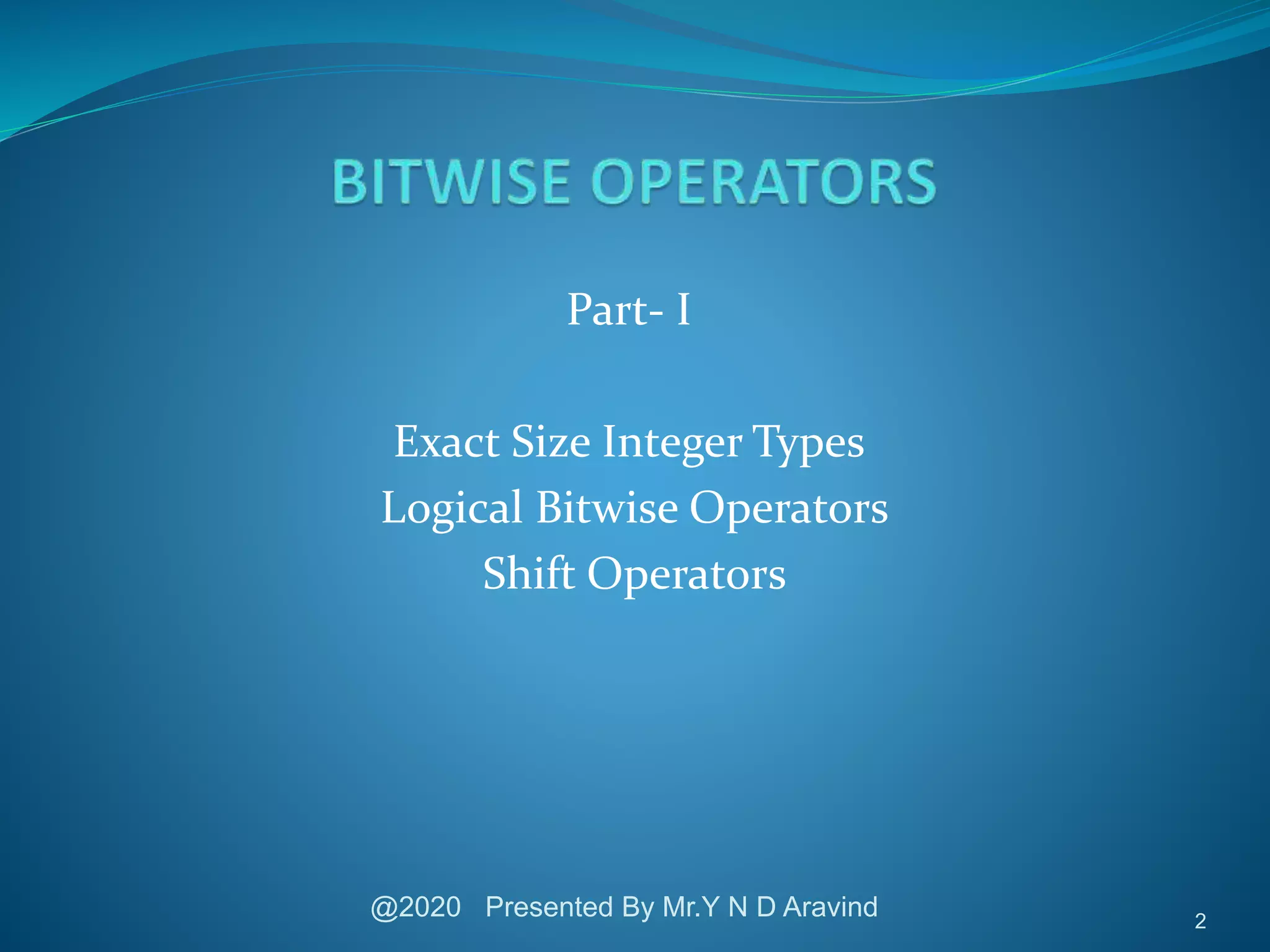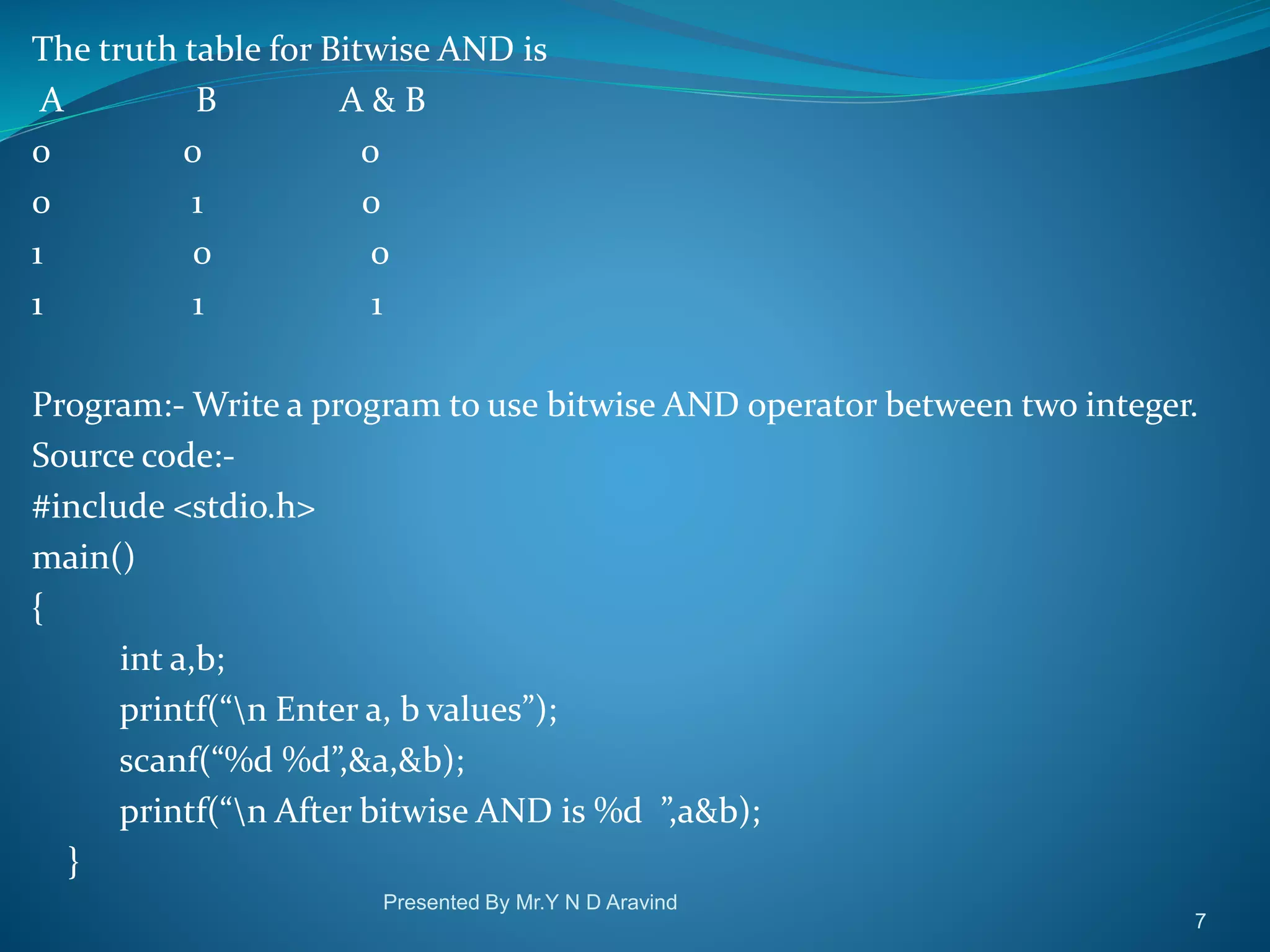This document discusses exact size integer types and bitwise logical operators in C programming. It defines exact size integer types like short int, int, long int and long long int. It then explains various bitwise logical operators like & (AND), | (OR), ^ (XOR), << (left shift), >> (right shift) and ~ (ones complement). Examples programs are provided to demonstrate the usage of these operators on integers. Shift operators are used to shift bits of an integer to left or right by a specified number of bits.

















